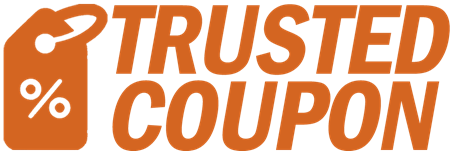
How and Why Adding Raw Honey Into Your Day Will Help You Get Healthier This Year
[ad_1]
There is an insect that makes food for humans and they are the only ones that can do it!
No doubt, you’ve crossed paths with one or two in your day and maybe it startled you, maybe you had to evict them from your home. Whatever the case, the fact is that honeybees do us a great service. Worker honey bees collect nectar and pollen from plants and they use it to make honey.
The Hard Working Ones
Clocking in around 15 miles per hour, averaging about 200 beats per second, the worker honey bee can fly for up to about six miles! In its lifetime, it’s estimated that one worker bee will make about one twelfth of a teaspoon of honey! In one trip, a honey bee will gather substances of anywhere from fifty to one hundred flowers!
One thing these remarkable busy little bugs do, is collect the sticky resin like substance trees and conifers create to guard against disease! This resin oozes out from the trees. The worker bees siphon it, chew it, mix it with their spit and create a remarkable byproduct we know as propolis!
Why Make Propolis?
Propolis is like a putty or a spackle. The honey bees use it to seal and sterilize the hive against bacteria. In addition to being antiviral, and antibacterial, propolis also protects the hive against climate change and fungi.
It would not be an exaggeration to say that without propolis, the honey bees wouldn’t survive!
Power House of Nutrients
In all our modern medicine and with all of our technology today, there are some things in propolis that are not identifiable, but what we do know is astounding! We know, for instance that propolis contains 500 times more bioflavonoids than what we find in an orange! Bioflavonoids, incidentally, give fruits and vegetables their color.
Why do we want bioflavonoids?
In addition to bringing color to our fresh fruits and vegetables, bioflavonoids help boost the immune system! In ancient times, propolis was used for healing ointments, binding wounds, protecting against infection. In fact in Egypt, some corpses were found to have been mummified with propolis!
Where Do I Find Propolis?
Now that you know the protective and healing properties of propolis, you might be asking, “Okay, where do I get this stuff?”
As its popularity grows, propolis is being found in many different products and forms – candles, sprays, ointments, all available for purchase. Personally, I have recently started incorporating raw honey into my lifestyle. Raw honey is unpasteurized, keeping all of the enzymes and antioxidant properties in their whole form – including propolis! More than once I have staved off a cold or a virus just by drinking hot water and raw honey! Aside from being packed with health benefits, raw honey is a wonderful spread, an excellent, sweetener in tea and many other things. What started as my way of reaching for more health, has become an enjoyable routine for me.
What About the Sugar?
As with anything, balance is key. Yes, honey is concentrated sugar, albeit in natural form. So you want to be careful not to have it in excess. You have to determine that based on your overall diet. If you are a person that consumes refined sugar in various forms in the course of a day- first I would say, you may want to rethink that.
Since you’re reading this article, I’m guessing the idea of getting healthier is appealing. Sugar – especially white, bleached, refined sugar flat lines the immune system and thus will sabotage your efforts to get healthier. So my first bit of advice would be cut back and add more fresh, whole foods as you do. Watch how your body thanks you for it by cutting your cravings for snacking and refined sugars.
A Good Rule of Thumb
Once you have kicked the sugar habit – or at least have better control of it, add in raw honey gradually. Start with just a few tablespoons in the morning. Spread it on some sprouted grain bread, stir some into your tea or coffee. Have another tablespoon before bed. When taken at night raw honey actually helps level off the blood glucose levels! Here is what one expert and author says about the safe amount to consume:
“How much honey is enough? Generally, three to five tablespoons of honey a day is sufficient. A good regimen to follow is to consume a tablespoon or two of honey in the morning with fruit or yogurt or cereal. Another tablespoon should be consumed at bedtime. In between, another one or two tablespoons can be ingested with fruit snacks, in baked goods, or as used in cooking. Honey contains about 60 calories per tablespoon. Generally, the percentage of ones’ total caloric requirements provided from simple sugars should not exceed 10%. Thus, the 180 to 300 calories a day provided from honey is sufficient, unless excessive energy demands allow for additional consumption.”
~ Dr Ron Fessenden, MD, MPM, The Honey Revolution
If you have any questions or concerns about your particular health needs and how propolis or honey may or may not benefit with you, consult with your health practitioner and make the decisions you need to based on the information you now have. Make 2013 a sweeter year and get healthier doing it.
[ad_2]
Source by Rachel Tamilio



